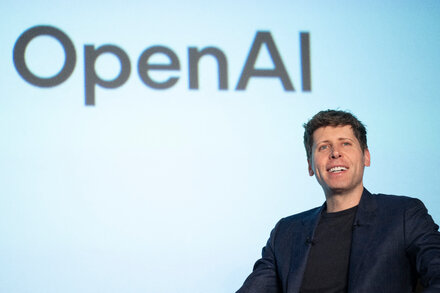
San Francisco, CA – October 6, 2025 – In a bold strategic maneuver designed to secure its computational future, OpenAI has reportedly forged an unprecedented alliance with rival chip manufacturers AMD and Nvidia, an initiative dubbed by insiders as “OpenAI’s Team of Rivals.” This groundbreaking approach seeks to diversify the generative AI leader’s hardware supply chain and foster accelerated innovation in artificial intelligence infrastructure.
The move comes as OpenAI, the creator of ChatGPT, faces an insatiable demand for graphics processing units (GPUs) – the specialized chips essential for training and running its increasingly complex AI models. Historically reliant on Nvidia, which holds a dominant position in the AI accelerator market, OpenAI’s new strategy aims to mitigate single-vendor dependency and leverage the competitive strengths of both industry giants.
“This isn’t about choosing sides; it’s about building the future,” stated Sam Altman, CEO of OpenAI, in an internal memo reportedly circulated to key partners. “The scale of AI requires an unprecedented level of cooperation, even among traditional competitors. Our mission demands resilience and diversified innovation at the core of our compute infrastructure.”
Sources close to the negotiations suggest that the arrangement involves long-term commitments from both AMD and Nvidia to supply OpenAI with their latest AI-specific chips, including AMD’s MI series and Nvidia’s Blackwell architecture. Crucially, the collaboration is said to extend beyond simple procurement, potentially including joint research initiatives aimed at optimizing OpenAI’s software stack for a multi-vendor hardware environment.
Strategic Imperative: Fueling the AI Revolution
The “Team of Rivals” strategy is a direct response to the escalating costs and supply constraints plaguing the burgeoning AI industry. As AI models grow in size and capability, the demand for high-performance computing has skyrocketed, making access to cutting-edge chips a critical bottleneck for development and deployment. By engaging both AMD and Nvidia, OpenAI aims to ensure a robust and uninterrupted supply, safeguarding its competitive edge.
While specific terms remain confidential, a representative from AMD, speaking on background, acknowledged the strategic importance of such collaborations. “We believe healthy competition drives innovation, and our engagement with leading AI innovators like OpenAI will accelerate the development of open, powerful AI platforms, ultimately benefiting the entire ecosystem,” they commented.
Nvidia, a long-standing partner of OpenAI, is also reportedly embracing the expanded framework. “The AI frontier demands collective ingenuity,” remarked a senior executive at Nvidia in a recent industry conference. “Our long-standing partnership with OpenAI, now broadened, will continue to push the boundaries of what’s possible through our accelerated computing platforms.”
Implications for the AI and Chip Industries
Industry analysts are hailing OpenAI’s initiative as a potentially transformative moment for the AI and semiconductor sectors. “This is a chess move by OpenAI, ensuring supply chain resilience and fostering a competitive innovation environment directly beneficial to their compute needs,” explained Dr. Evelyn Reed, a lead analyst at TechInsights. “It could force both AMD and Nvidia to push their boundaries even further, knowing they are directly competing for a crucial customer’s future compute strategy, while also potentially setting a precedent for other large AI developers.”
The success of this “Team of Rivals” approach could usher in a new era of collaborative competition, where leading AI developers play a more active role in shaping the hardware ecosystem rather than simply being customers. It underscores the immense power wielded by AI companies and their growing influence over the technological direction of the semiconductor industry.
OpenAI’s latest gambit signals a future where strategic alliances, even with rivals, are not just about market share but about collectively advancing the limits of artificial intelligence itself.
Source: Read the original article here.





